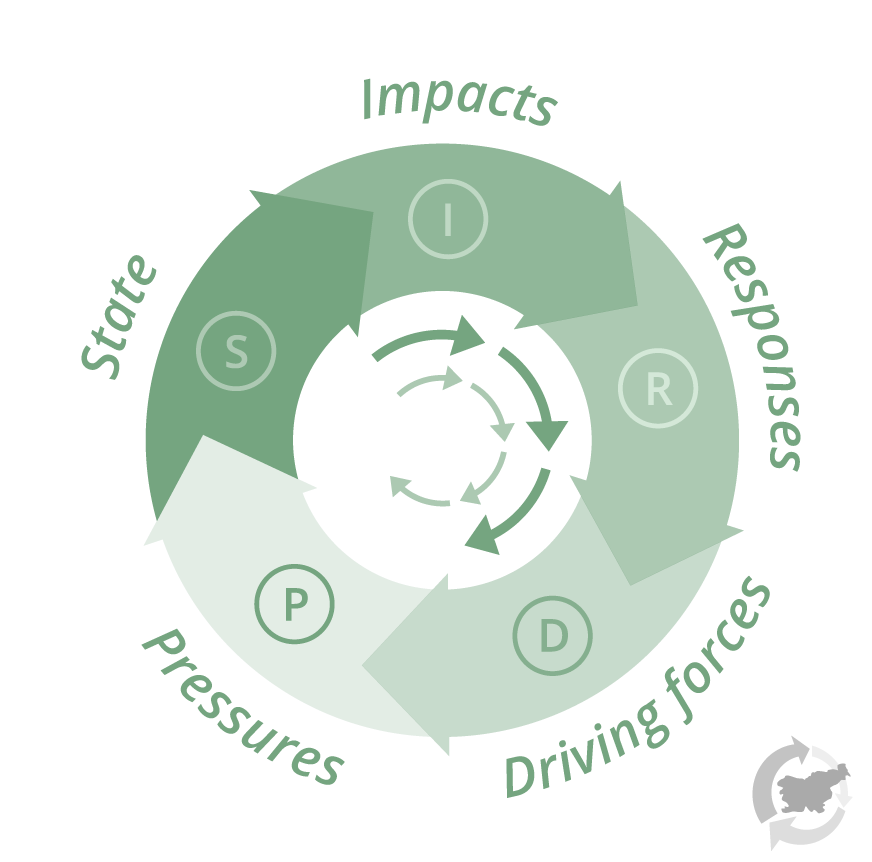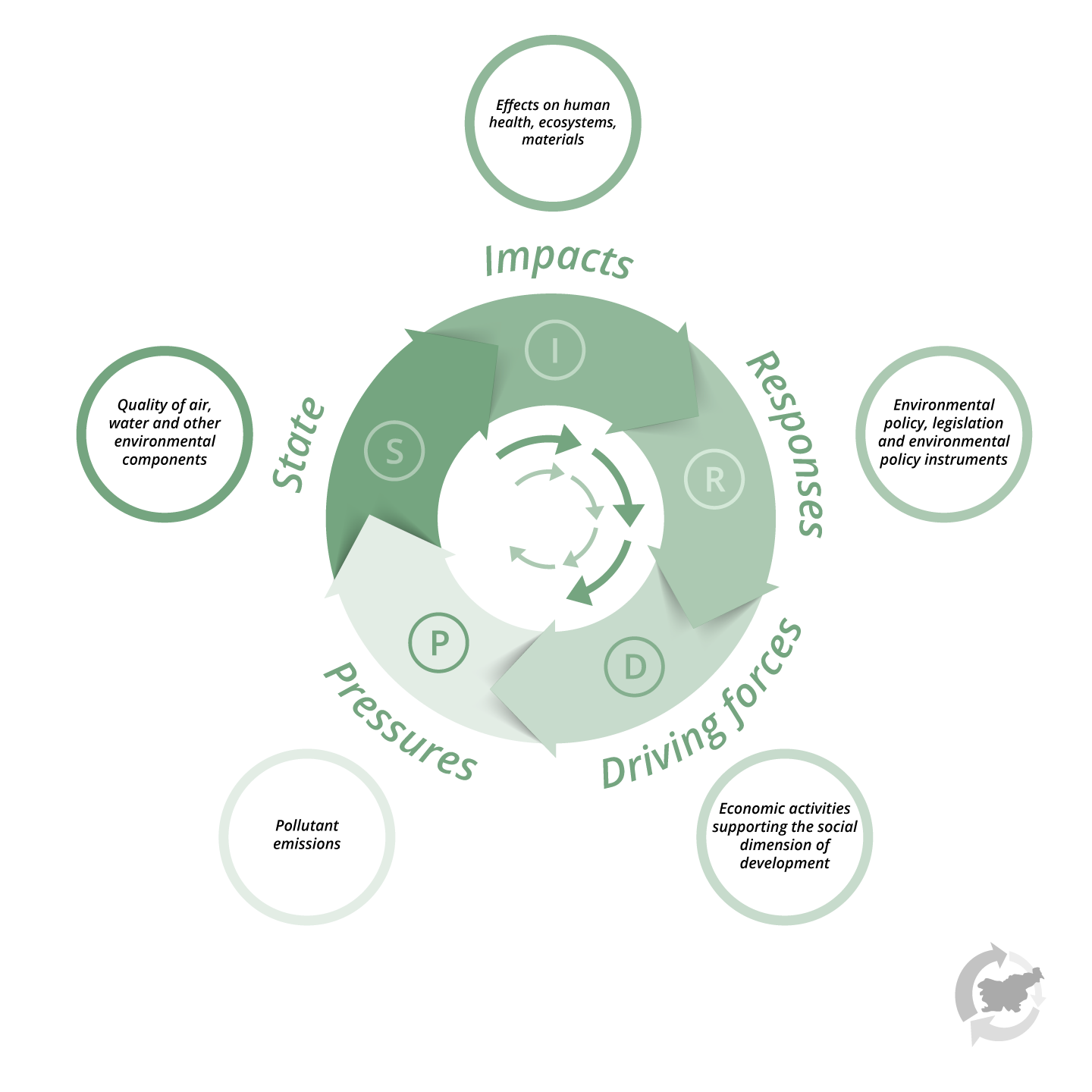2How the environmental indicators can be used?
The Environmental Indicators in Slovenia website provides access to over 180 indicators, divided into topic themes/sets. The latter refer to environmental components (like water, air), environmental issues (climate change, nature conservation, loss of biodiversity, waste management, green economy) and sectoral policies (transport, agriculture, energy, health, forestry, environmental policy instruments).
Sets of indicators are using an assessment framework, which helps to determine functions of each indicator. The European Environment Agency divided the framework into five categories: the DPSIR framework, which includes driving forces pressures, state, impacts and responses. Each individual set has its own purpose (Figure 2):
- Driving forces are socio-economic factors and activities which either increase or mitigate the pressures on the environment, e.g. the extent of economic, transport or tourist activities.
- Pressures are direct anthropogenic pressures and impacts on the environment, e.g. pollutant discharges or use of natural resources.
- State implies the current condition and trends of a certain environmental phenomenon such as the degree of air, water and soil pollution, biodiversity in a specific geographic area, the availability of natural resources (e.g. wood, freshwater).
- Impacts are the effects of the changed environment on the health of humans and other species.
- Responses are reactions of the society to environmental issues. Responses may include specific state measures, e.g. taxes on the use of natural resources. Decisions by businesses and individuals, e.g. corporate investments in pollution control or purchases of recycled goods by households, are equally important.
Source: European Environment Agency

